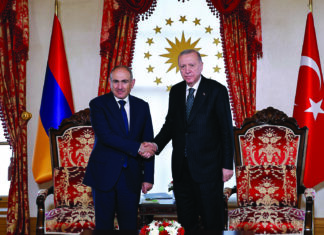By Artsvi Bakhchinyan
Special to the Mirror-Spectator
TOKYO — Wheat bread was introduced for the first time to the rice-eating Japanese people in the 16th century by Portuguese missionaries. Because of Japan’s complete isolation from the world, the wheat culture remained unknown until the middle of the 19th century. Over the next century, the Japanese began to open up to the world and try different cultures, including food culture.
After World War I, one of Japan’s most influential and wealthy people, Okura Kihachiro, who was a representative of Okura guni major financial institution and founder of the Tokyo University of Economics, came to Harbin, China, specifically to seek out a skilled baker from Russia whose fame had reached Japan. Kihachiro asked him to move to Japan on favorable terms, and the baker agreed. When in Japan, he was able to create the sweet bun melonpan that is widespread in Japan today…
The baker’s name was Hovhannes (Ivan) Ghevenian Sagoyan. Little is known about him. Born in 1888 in Karin (Erzurum), he probably moved to Moscow at an early age, where he became the personal baker of the Romanov house. The Russian royal family loved the assortment of breads Sagoyan made, which he based on French and Viennese baked goods. After the revolution of 1917 Sagoyan escaped to China and settled in Harbin and became the baker of the New Harbin Hotel.
Accepting the invitation to work in Japan, Sagoyan settled in Tokyo’s Meguro suburb, worked at the Imperial Hotel in Tokyo, and opened a bakery named Monsieur Ivan. In Japan, Sagoyan made a new sweet bun with the shape of cantaloupe melon, combining two types of dough and called it melonpan (melon bread in French) or sunrise-pan (sunrise bread). It was immediately adopted by Japanese, and still remains widely popular and soon became a national brand. Melonpan is also widespread in Taiwan, China and Latin America. It is made from plain sweet dough with yeast covered with a thin layer of dough with butter and egg. Melonpan usually does not taste like melon, but recently some producers have added melon to the bun. There are varieties of these bakery products: with creams, chocolate, caramel, maple syrup, whipped cream…









